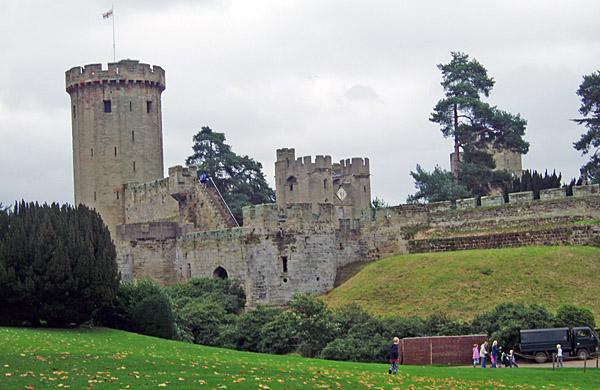Well, one of the first things that you will learn about feudalism is that there is no generally-accepted, standard definition amongst historians of just exactly what feudalism was and when/where it existed. What could be used as traits to define feudalism in England in the twelfth century are not what you would use to define feudalism in France in the eighth century, and none of those characteristics might ever apply to feudalism in either Poland and Serbia. So, what does that leave us with (besides the negative and pejorative connotations of the word "feudalism")?
Let's start with this.
Feudalism was the political and social system of the Middle Ages that slowly developed as an ad hoc system of security in an insecure world after the collapse of the Roman Empire. The heart of the system lay in the relationship of mutual duties between a lord and his vassal, bound together by a sacred oath, and bound to lend military assistance to each other.
And we can add.
Basically, feudalism in Western Europe arose as a result of the disintegration of large-scale political authority (the disappearance of the Roman Empire) which led to the devolution of public power into the hands of localized, regional lords. These regional lords, through a complicated system of personal contract, could gather together a local defense force.
In other words, we might say that
Feudalism is a system of extremely, localized government that also has economic (manorialism) and social aspects (chivalry) that go along with the form of government. (Just thought that I would throw this into the discussion, but the definitions of "manorialism" and "chivalry" are just as difficult as "feudalism.)
Here is another attempt at a definition:
As a basic and simple definition one may assume that feudalism exists in a society with
1) extremely strong ties of personal dependence,
2) a strong military class at the top of the social structure,
3) hierarchical systems of land rights based on personal dependence,
4) a breakup of central authority, with State powers distributed to powerful men (usually) in control of large areas of land,
and 5) a body of institutions used to create and enforce the ties of dependence.
So why even use the term "feudalism?"
Many people have different notions about what is and is not feudal. Now the tendency is to just get rid of the term, rather than defining it with authority, as with Brown. This would be a mistake. As a constructed term feudalism fulfills its purpose as a generalization: it gives students and lecturers a springboard from which they can leap to higher, more complex ideas and concepts, without losing much along the way. However much some scholars may 'deplore' the term feudalism, however much popular speech mangles the meaning behind feudal, with the proper definition and a brief explanation, they can open up many facets of Medieval European society and culture. (source)
One of the key features of feudalism was an exchange between two parties, a grant of the use of a parcel of land, often called a "fief" (It could be a very large parcel of land,), in return for military service. This was, in essence, a contractual relationship between nobles. Feudalism, as a political-social-economic system only really applies to the nobility, not to peasants, serfs or traders.
Feudalism was also often accompanied by an economic system that historians have called manorialism, and that meant large estates worked by serf labor. Again, as just mentioned with regard to feudalism, this was a contractual relation between the noble, who controlled the land, and the serfs, who worked the land for the noble. The latter also provided protection for the serfs. There existed tremendous variety in the scale of the manorial system, from extremely wealthy nobles who controlled thousands and thousands of acres as part of their fief, to impoverished nobles who had little.
Some recommended online lectures and websites
- Wikipedia entry on feudalism
- Feudalism and Medieval Life
- The Rise of Feudalism 850-1000 AD
- History of the Orders of knighthood
- History of Feudalism
- The Feudal System
- Nick Higham, Just how important is Magna Carta 800 years on? (BBC magazine article)
- Catholic Encyclopedia entry (nice summary of pros and cons of feudalism)
- Melissa Snell, The Problem with Feudalism
- Richard Abels, The Historiography of a Construct: “Feudalism” and the Medieval Historian
- Lecture 22: European Agrarian Society: Manorialism
- The Manorial System
- There are not very many good videos that deal with feudalism:
- There are a series of these videos, The Worst Jobs in History - The Middle Ages - Part 1. While technically the videos are really not all about feudalism, they are still worth watching.
- For extra credit please suggest to your instructor a relevant website for this unit of the course. Send the title of the site, the URL and a brief explanation why you find the information interesting and applicable to the material being studied in this unit.
